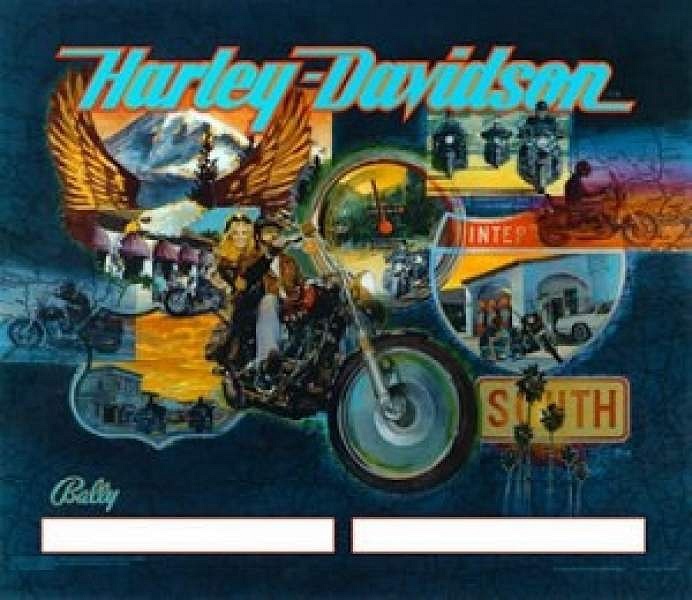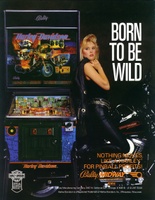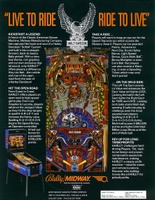

Harley Davidson
This game was intended to emulate the success of Gottlieb's 'Silver Slugger' which was a low-cost game with earnings that rivaled expensive Williams/Bally games like 'Diner'. Hence it has virtually no ramps, toys, or backbox animation. The original title was 'Poker Night' with a theme centering around a congregation of poker-playing, pizza-eating men. The playfield drawing of this original version is included in this listing. This was the last Bally game to have alphanumeric score displays. We had heard there was a second run of this game by this manufacturer. We asked Ken Fedesna, Executive VP/General Manager over Williams/Bally/Midway from 1988 until their close of pinball production in 1999, who checked his information and found no evidence of a second run. In searching, he came up with the following detailed information about this first run:1) On 10/19/90 we released 15 prototypes to be built starting 11/15/90. 2) The first screened playfields for these protos arrived on 11/12, at which time Engineering in combination with the manufacturing prototype line started putting them together on 11/14. 3) The 15 prototype games were all completed by 12/10/90. On 12/10 we released 250 samples to be built starting on 1/7/91. 4) On 12/20, we had a management discussion regarding the cost to build this game and what we would sell it for. It was decided to offer the game to distributors for a selling price of $2045 net. 5) The 250 sample games were completed by the end of February, 1991. 6) Production started in April of 1991 and was completed by June of 1991. 7) There were a total of 2202 games built and sold (inclusive of the 15 prototypes, samples, and production). We would always build approximately 15 prototypes (combination of engineering personnel and manufacturing personnel) to prove out the design and provide early field testing units for earning potential. We would then build 200 to 250 samples on the sample production line to make sure we had all the design/manufacturing bugs worked out. These 250 samples would then be sold to distribution in order for them to get an idea of the game's potential. From these samples, we would then ask for the first production sale's orders. Harley was an experiment to see if we could bring to market a more simple playing game with a lower cost. In actuality, a second production run occurred in 1991 a few months after this first run ended and for which there seems to be no surviving manufacturer documentation. See Midway's 1991 'Harley-Davidson (2nd production run)'.


































